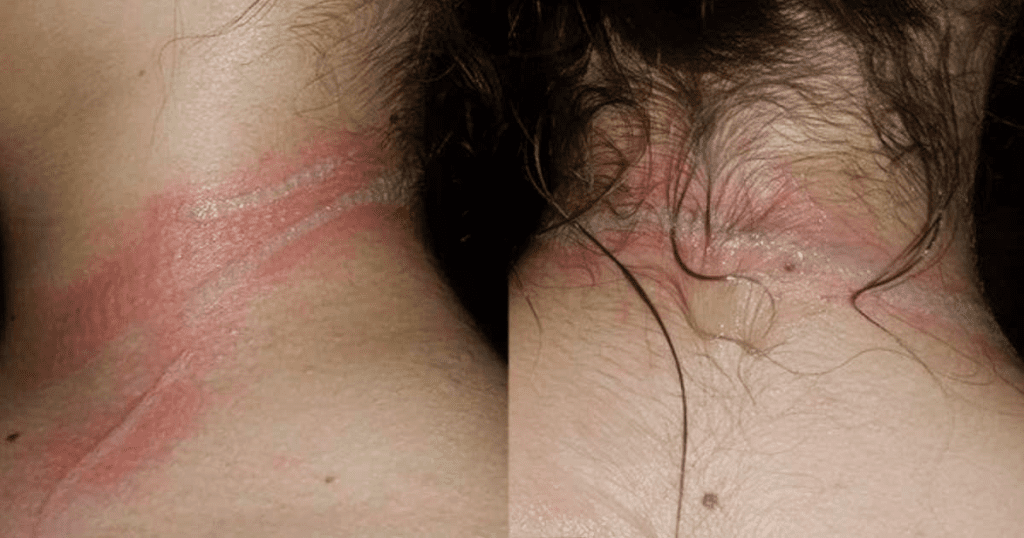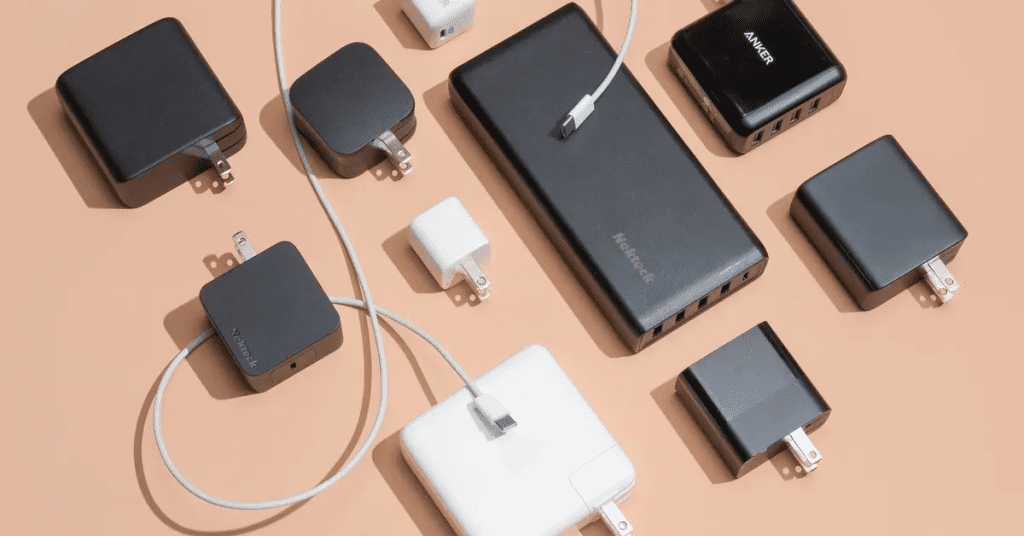Jackie Fedro, like many parents, decided to give her young teenager, Gabbie, a cell phone to keep in touch as she grew more independent. But what started as a gesture of safety took a frightening turn when Jackie heard her daughter’s scream of pain one evening. Running to help, she discovered an unexpected danger lurking in their home: a common cell phone practice that ended with a trip to the doctor. Here’s what happened and the essential lessons every parent should know about phone safety.
A Parent’s Worst Fear Becomes Reality

Gabbie, 13, was excited about her new cell phone, a gift from her mom, Jackie, meant to provide a way for them to stay in contact as Gabbie started high school activities. However, just days after receiving the phone, Jackie heard her daughter scream in agony from another room. By the time Jackie reached her, Gabbie was clutching her neck, struggling to catch her breath.
“It’s the worst feeling in the world as a mother to watch your child scream in pain and have no idea how to help her,” Jackie shared. The few moments it took for Gabbie to explain the source of her pain felt like an eternity.
The Shocking Cause Behind the Pain
Gabbie finally managed to describe what had happened. She’d been chatting on her new T-Mobile LG D500 while it was plugged into the wall, and at some point, she felt a sudden shock. The electrical current traveled through the cord and somehow through a metal necklace she was wearing, resulting in a painful burn on her neck. Gabbie suffered second-degree burns from what was supposed to be an innocuous phone call.
Cell Phone Burns: How Common Are They?
Scott Wolfson of the U.S. Consumer Product Safety Commission later confirmed that while rare, injuries like Gabbie’s can happen when phones are charging. The combination of metal accessories, such as necklaces, and faulty or overheating devices can create a dangerous situation. Most reported injuries stem from phones overheating due to battery issues, but other factors can trigger similar accidents.
While factory-issued chargers are generally safe, Wolfson warns against using generic or non-certified chargers or replacement batteries, as they can significantly increase the risk of overheating and electrical issues.
The Danger of Sleeping With Your Phone
With cell phones so intertwined in daily life, many people habitually sleep with their phones close by. However, studies reveal that this can not only compromise your quality of sleep but also pose a potential hazard. When a phone overheats—often due to poor ventilation or high power demands—it can cause burns if it’s under a pillow or close to skin.
The New York Police Department recently issued a warning about this very issue, advising against sleeping with phones near pillows or bedding. Phones generate heat while charging, and close contact with flammable items, such as pillowcases and sheets, can even lead to fires. Beyond safety concerns, having a phone too close at bedtime has been shown to impact sleep quality, reducing restful sleep and making it harder to fall asleep due to the device’s emitted blue light.
Understanding the Risk of Generic Chargers and Accessories

One common culprit in cell phone burn cases is the use of non-certified chargers. Many people turn to third-party chargers and accessories as cost-effective replacements, but these items can be risky. Unlike factory-issued chargers that meet specific safety standards, uncertified or generic chargers may not have proper insulation, voltage control, or the ability to handle power surges, leading to overheating.
The U.S. Consumer Product Safety Commission urges consumers to always use the manufacturer-recommended chargers and batteries. The slightly higher cost of a certified charger can prevent potentially life-threatening situations, as was seen in Gabbie’s case.
A Lesson in Cell Phone Safety
In Gabbie’s situation, she was using the original charger that came with her phone, which underscores that accidents can happen even with certified equipment. T-Mobile responded quickly by replacing her phone and covering her medical expenses, but her story has become a critical reminder to stay aware of phone safety practices.
Here are some phone safety tips that can prevent similar accidents:
- Avoid Using Phones While Charging: Try not to use your phone while it’s plugged in, as this increases the device’s temperature and may lead to accidental shocks, especially if the charger or phone is damaged.
- Remove Metal Accessories: If you need to charge your phone while using it, avoid wearing metal accessories, like necklaces or bracelets, which could conduct electricity in case of a short circuit.
- Invest in Quality Chargers: Always use chargers and accessories provided by or certified by the phone’s manufacturer to reduce the risk of overheating or electrical faults.
- Charge Phones on Hard Surfaces: Avoid charging your phone on soft surfaces like beds or couches, which can trap heat and lead to overheating. Instead, place it on a flat, heat-resistant surface to allow for better ventilation.
- Stay Attentive to Warning Signs: If you notice your phone or charger feels unusually hot, disconnect it immediately and inspect for any visible signs of wear or damage.
- Educate Your Kids on Safe Charging Practices: Teach young phone users about the potential dangers of charging phones with jewelry on, using phones while plugged in, and sleeping with phones under their pillows.
T-Mobile Steps In to Help

In response to the incident, T-Mobile took quick action, sending Jackie a new phone and offering to cover Gabbie’s medical costs. While these gestures helped ease the family’s distress, Jackie remains committed to sharing their story to help prevent similar incidents.
Why Cell Phone Safety Awareness Matters
With cell phones being a staple in everyday life, safety around their use is critical, especially for young users who may not fully understand the risks. Phone manufacturers are consistently working to improve battery safety and reduce overheating risks, but user awareness remains the best defense against preventable accidents.
Wolfson emphasizes the importance of following product guidelines and steering clear of uncertified charging accessories. By spreading awareness, Jackie hopes to prevent other parents from facing the frightening experience she went through with Gabbie.
Conclusion
Gabbie’s story reminds us that while technology brings convenience and connection, it also requires caution and responsible use. With the right precautions—using certified chargers, removing metal accessories, and charging on heat-resistant surfaces—many risks associated with cell phone use can be minimized. As Jackie learned firsthand, ensuring your family’s safety around devices doesn’t just mean knowing how to use them; it means being aware of potential hazards as well. So, the next time you plug in your phone, remember these simple but essential safety tips, and make technology a safe part of everyday life.


